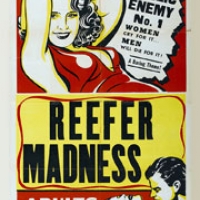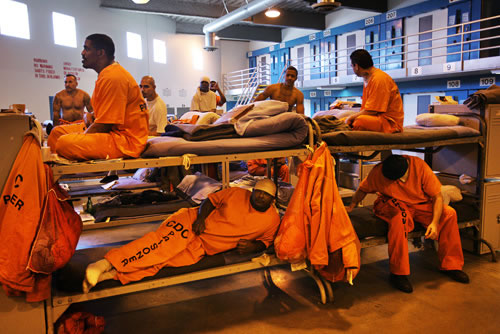An interesting article in the NYTimes last week made me think about marriage and incarceration and the inevitable link to how we send people to prison for years due to the so-called “war on drugs.”
Charles Blow, NYTimes columnist, quoted public health expert Ernest Drucker’s well-known 2011 book, A Plague of Prisons with the following stats:
■ “The risk of divorce is high among men going to prison, reaching 50 percent within a few years after incarceration.”
■ “The marriage rate for men incarcerated in prisons and jails is lower than the American average. For blacks and Hispanics, it is lower still.”
■ “Unmarried couples in which the father has been incarcerated are 37 percent less likely to be married one year after the child’s birth than similar couples in which the father has never been incarcerated.”
And guess why so many black and Hispanic men are in prison? You got it, the so-called “drug war.” Or as Blow calls it “the disastrous drug war,” or “a war on marijuana waged primarily against young black men, even though they use the drug at nearly the same rate as whites.” With television and the media, “reefer” has been glamorized to “reefer madness,” and indeed the sentencing of reefer is madness.

The drug war has brutalized so many with lengthy sentences. How can these sentences not affect marriage and families? Take for example Stephanie Nodd who according to her page on Families Against Mandatory Minimums (FAMM)’s website served 21years of a 30-year sentence in a federal prison in Florida for a crack cocaine conspiracy she had been involved in for just one month. FAMM was able to influence the Sentencing Commission to make new guidelines and Stephanie was released.
But unlike Stephanie, so many prisoners are saddled with unjust sentences for crimes involving drugs and they languish behind bars without hope or they get out, like Stephanie did but after serving years. Years. Decades. And like Stephanie, many aren’t the drug dealers we portray on TV.
Mass incarceration certainly destroys families and Blow also points out how those who’ve been arrested for drugs can’t get financial aid, i.e. can’t afford to go to college without taking out loans at very high rates, and also have more debt. This affects black students more than Latino and white students: 81% vs. 67% or 64%. And another guess what. The more educated you are, the less likely you are to be involved in crime, go to prison and stay out once you’re out.
Incarceration also causes more debt to those on their way to marriage or to existing families. Think of the phone bills, the transportation, the lost income. How people stay together if one partner is imprisoned is almost more amazing than how they break up. Add to that the stress of the unjust sentences from the so-called “drug war,” and bingo, marriage is handicapped.
As Blow points out “One can’t bemoan the breakdown of the family without at least acknowledging the structural and systematic forces working against its cohesion.” He means the black family. I’ll add to that any family facing an unjust drug sentence in a society that supposedly supports marriage.

